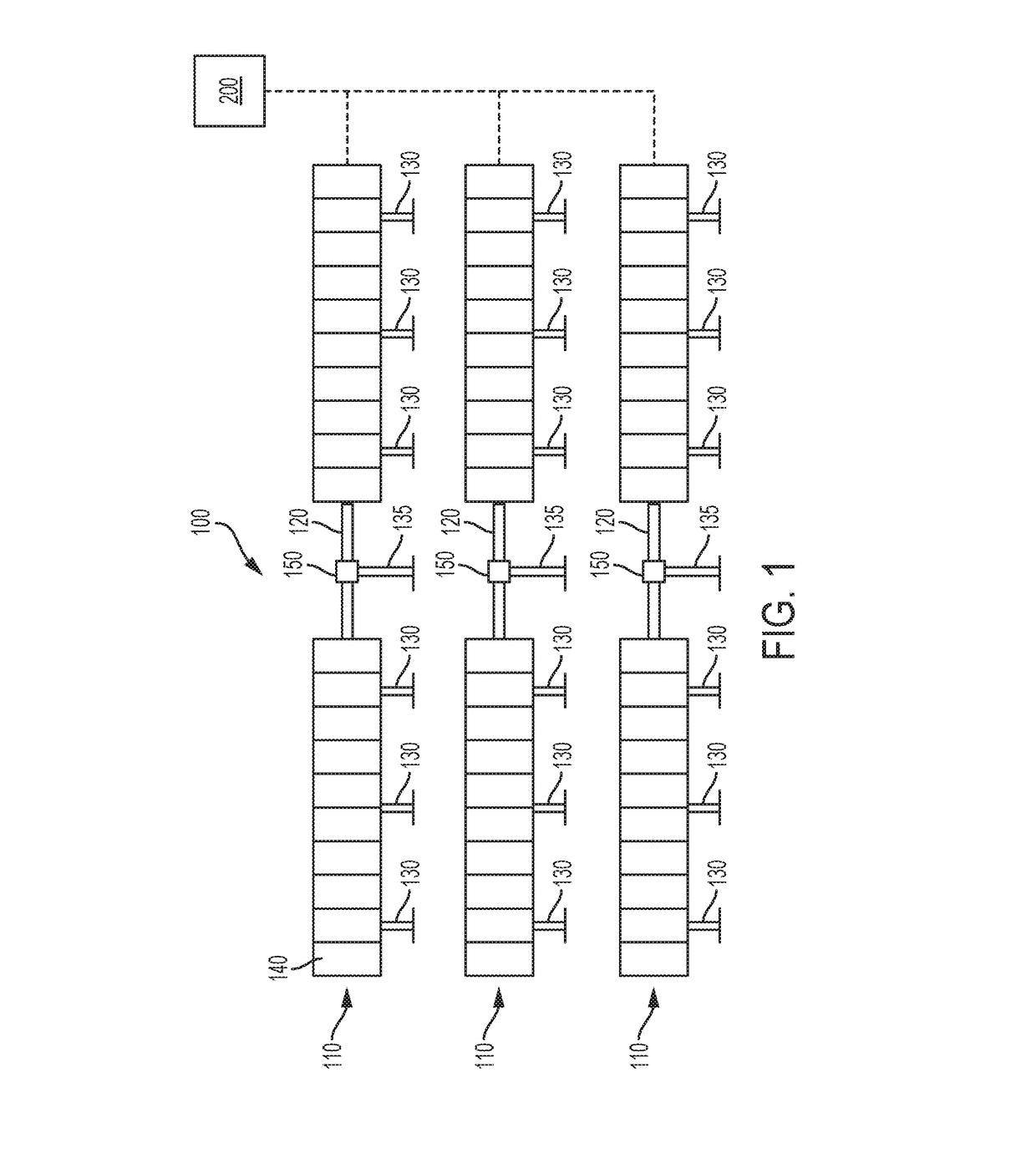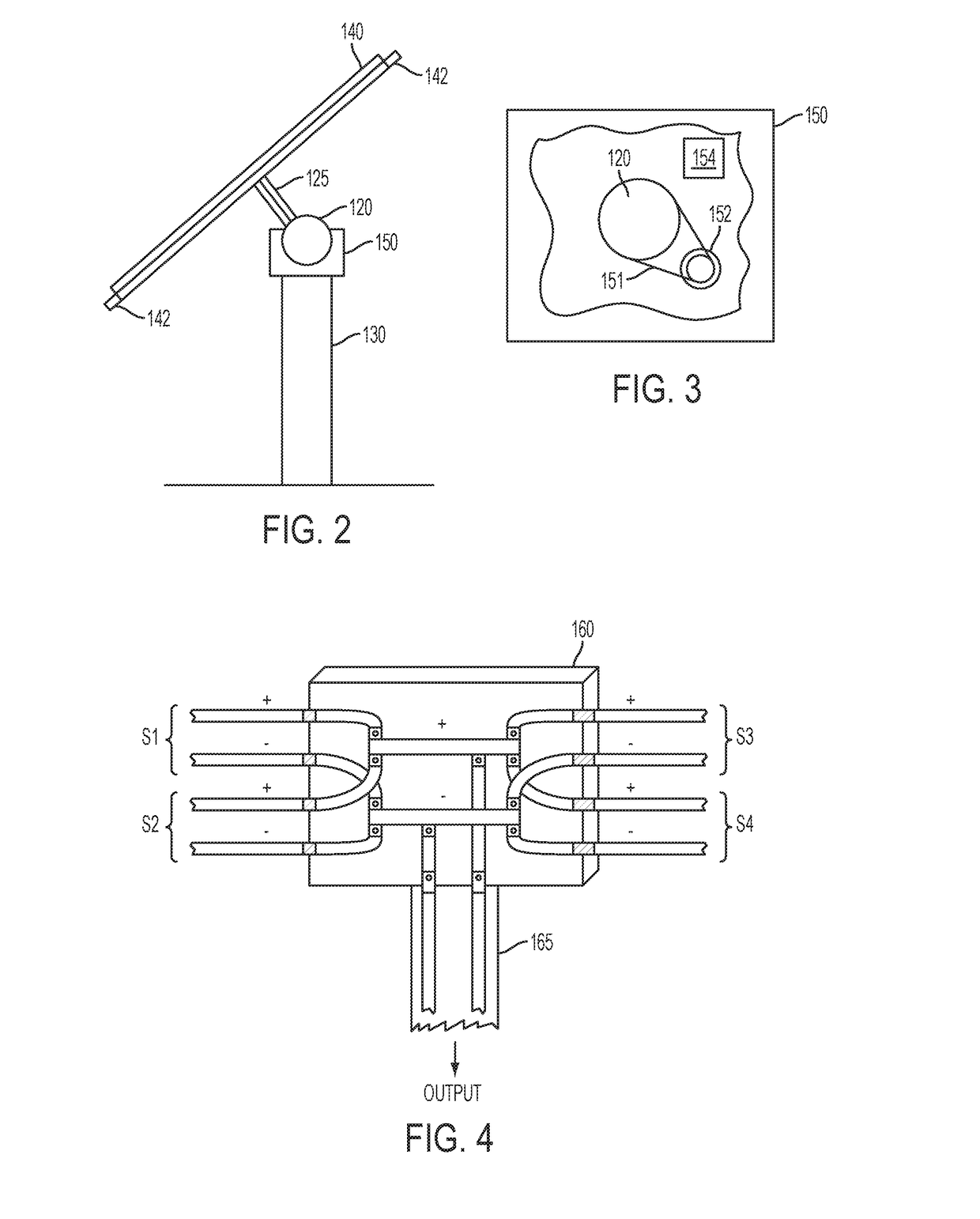Array powered solar tracking system
a solar tracking and array technology, applied in the field of solar tracking systems, can solve the problems of increasing the installation cost, time and complexity of mounting or burying power lines, limited power consumed for moving the tracking array, etc., and achieves the effect of reducing the amount of wiring required, minimizing the amount of wiring needed, and minimizing the amount of wiring
- Summary
- Abstract
- Description
- Claims
- Application Information
AI Technical Summary
Benefits of technology
Problems solved by technology
Method used
Image
Examples
Embodiment Construction
[0018]Throughout this description for the purposes of explanation, numerous specific details are set forth in order to provide a thorough understanding of the many aspects and embodiments disclosed herein. It will be apparent, however, to one skilled in the art that the many aspects and embodiments may be practiced without some of these specific details. In other instances, known structures and devices are shown in diagram or schematic form to avoid obscuring the underlying principles of the described aspects and embodiments.
[0019]The present system provides for a self-powered, solar tracker array system designed to provide electrical power to a motor controlling the tracking motion of the array system, the power being diverted from the PV modules of the array system.
[0020]FIG. 1 is a schematic illustration of solar tracking array system 100. In particular, FIG. 1 shows solar tracking array system 100 having single-axis tracker arrays 110 according to various embodiments of the inve...
PUM
 Login to View More
Login to View More Abstract
Description
Claims
Application Information
 Login to View More
Login to View More - R&D
- Intellectual Property
- Life Sciences
- Materials
- Tech Scout
- Unparalleled Data Quality
- Higher Quality Content
- 60% Fewer Hallucinations
Browse by: Latest US Patents, China's latest patents, Technical Efficacy Thesaurus, Application Domain, Technology Topic, Popular Technical Reports.
© 2025 PatSnap. All rights reserved.Legal|Privacy policy|Modern Slavery Act Transparency Statement|Sitemap|About US| Contact US: help@patsnap.com



